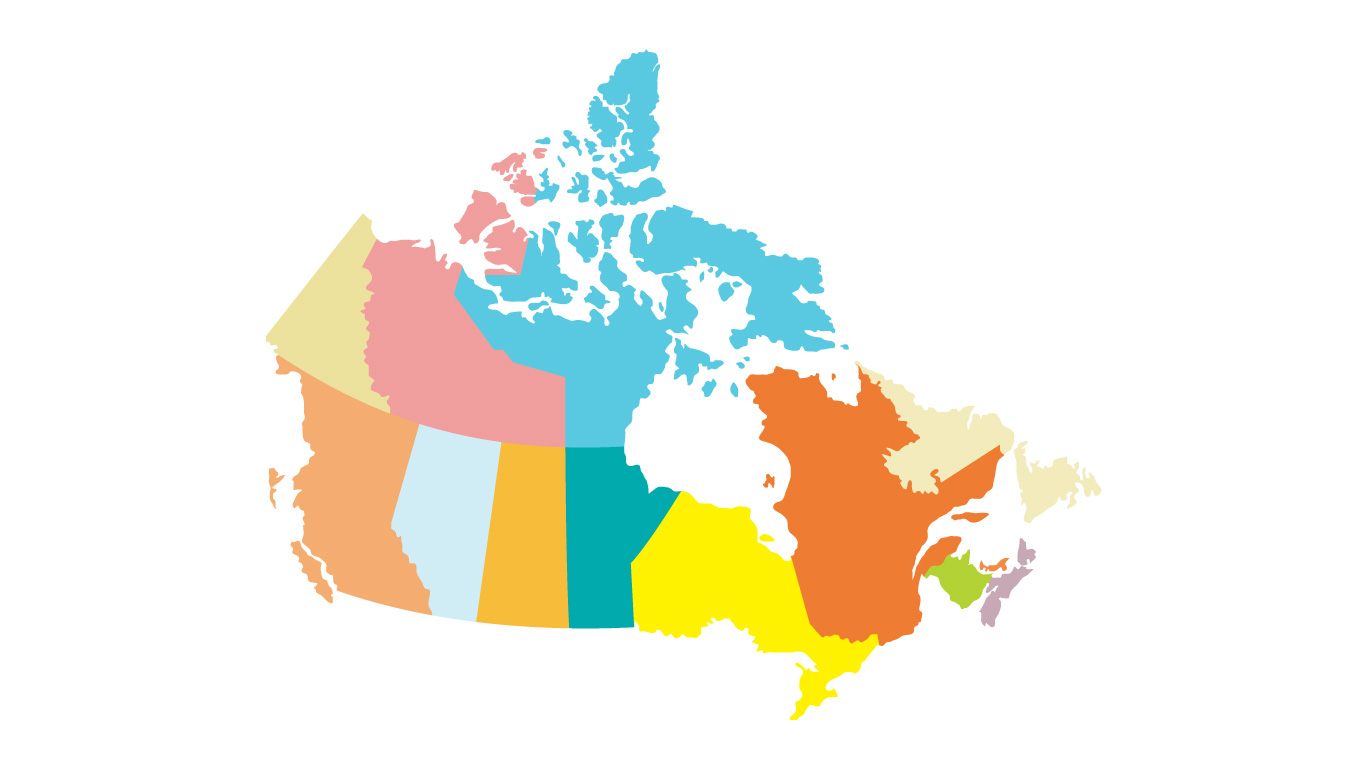
The Provincial Nominee Program was first introduced 25 years ago to increase the settlement of economic immigrants outside Canada’s three largest cities and to address the workforce needs of employers, as perceived by every province (excluding Quebec) and Yukon and Northwest Territories.
Over the years, the share of economic immigrants arriving through the program has risen from 1% in 2000 to 35% in 2019, when 68,000 nominees entered Canada, making it the largest selection program for economic immigrants nationally.
Provincial nominees are more likely to settle outside of Canada’s largest cities and provinces
Since the inception of the Provincial Nominee Program, a substantial regional decentralization of new economic immigrants has been achieved.
As a result, the share of economic immigrants intending to settle in Ontario has fallen from 61% in 2000 to 42% in 2019, while the share intending to settle on the Prairies and the Atlantic provinces has risen from about 1% or less to 7%.
Almost three in four provincial nominees have previous Canadian job experience
The share of provincial nominees who had pre-landing Canadian earnings has increased tenfold since the program’s inception, rising from 6% in 2000 to 61% in 2019 (and further to 72% in 2021).
This is important because recent immigrants who have had medium- or high-paying pre-landing Canadian jobs tend to have better economic outcomes than those without such experience.
Over one-third of provincial nominees have previously studied in Canada
The share of provincial nominees with pre-immigration Canadian study experience has grown exponentially since the early 2010s. As a result, the share of immigrants arriving to Canada through the program with Canadian study experience rose from 7% in 2010 to 38% in 2019.
The Provincial Nominee Program is attracting more immigrants to work in a skilled or technical trade
The Provincial Nominee Program is also attracting more immigrants to work in a skilled or technical trade rather than a professional occupation. As a result, the share of all economic principal applicants aged 20 to 54 years with an intended skilled and technical occupation rose from 20% in 2005 to 34% in 2019, while the share with an intended professional occupation declined from 55% to 38% over the same period. This is an important development given the current labour shortage Canada is facing in the trades.
Almost all provincial nominee immigrants can speak an official language
Official language ability among provincial nominees has improved markedly since 2005, when one-fifth of provincial nominees spoke neither English nor French at landing.
However, most provincial nominees now require nominees to speak English or French at some specified level, depending on the skill level of the job the nominee is expected to hold. As a result, the share of nominees not speaking English or French at landing has fallen to virtually zero (2% in 2019).
Just over two-thirds of provincial nominees are from Asia
Economic immigrants have traditionally come to Canada from a wide range of source countries, with no single source country dominating, but this is changing.
In 2019, just over two-thirds (70%) of new provincial nominees arrived from three regions of Asia, with over one-third coming from the Indian subcontinent (36%), one-fifth from Eastern Asia, mostly China (22%) and one-tenth from Southeast Asia, such as the Philippines, Vietnam or Thailand (12%).
The share of economic immigrants originating from Southern Asia almost doubled from 2005 to 2019, rising from 22% to 43%. Indeed, in 2021, almost half (48%) of the immigrants admitted through the Provincial Nominee Program arrived from the Indian subcontinent, representing the highest concentration of economic immigrants from a particular source region in three decades.
StatsCAN App
Did you know you can read StatsCAN Plus articles and more on the StatsCAN app? If you’re already using the app, let us know what you think by leaving a review in the Apple App Store and Google Play.
Contact information
For more information, contact the Statistical Information Service (toll-free 1-800-263-1136; 514-283-8300; infostats@statcan.gc.ca) or Media Relations (statcan.mediahotline-ligneinfomedias.statcan@statcan.gc.ca).
